FAQ: From when to test to how to get one, here's what to know about COVID-19 testing kits
- Oops!Something went wrong.Please try again later.
Free test kits for COVID-19 are available to American households via the United States Postal Service.
People can expect to see different testing brands arrive in their mail. The Biden administration announced contracts with three major manufacturers to supply the first wave of free home tests — Abbott Laboratories, iHealth Lab and Roche Diagnostics. The Food and Drug Administration has granted emergency use authorization to a dozen home test manufacturers.
Here's what you need to know:
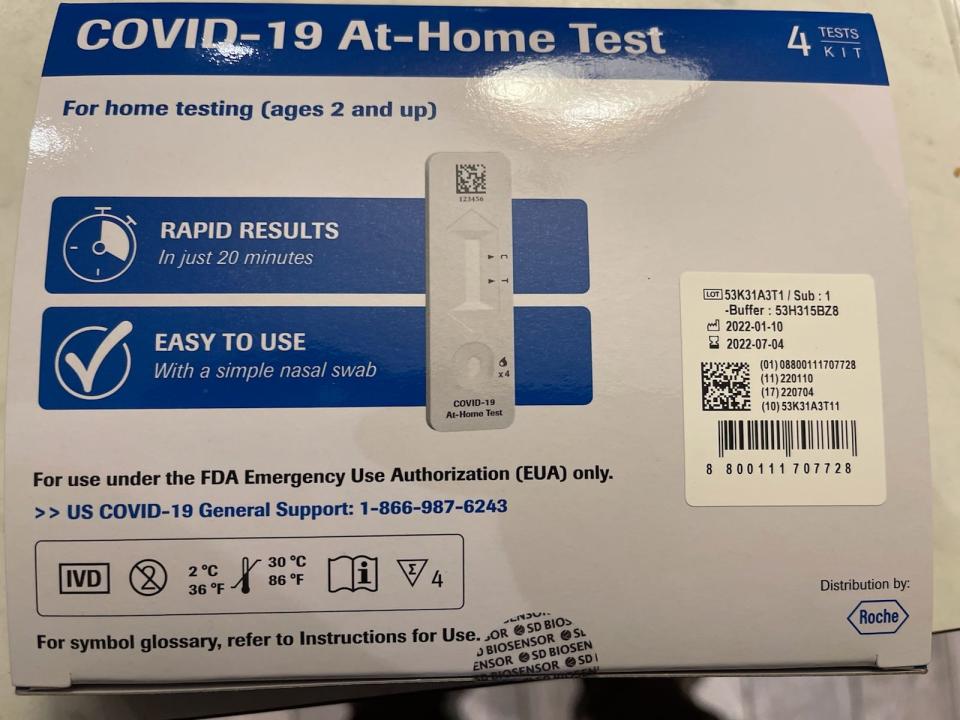
When should I test?
The omicron variant moves faster than previous variants, but that doesn't mean you'll test positive the day after an exposure. Dr. Katie Sharff, Chief of Infectious Disease for Kaiser Permanente Northwest, recommends people wait three to five days after an exposure to test.
Before I use the at-home test, is there anything I should do?
Experts are encouraging test recipients to read all the instructions of their tests before beginning them to be sure the results are as accurate as possible. Test kits should be kept out of extreme temperatures and thrown away when they are expired.
What's the difference between a PCR and a rapid antigen (at-home) test?
"The rapid antigen tests detect COVID when people have a high amount of viral particles, whereas the PCR test is an amplification process," Sharff said. "So PCR tests are much more sensitive. A rapid antigen test is going to detect the viral particles if someone has a high amount of virus and is shedding a lot of virus."
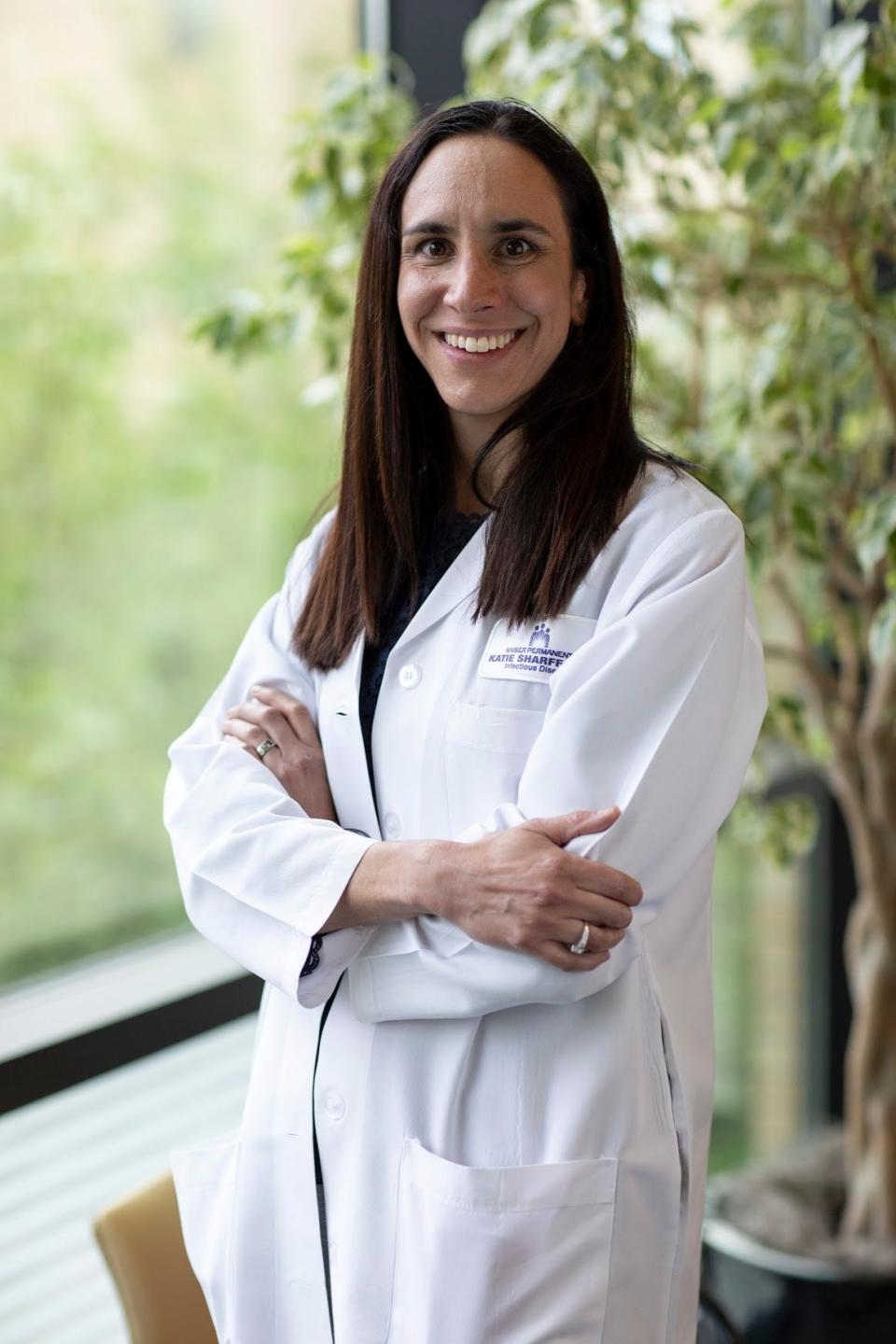
She added that rapid tests, the tests you use at home, are most sensitive when you're symptomatic, even more so if you've had symptoms for a day or two. If someone is asymptotic and therefore isn't shedding as much of the virus, it's harder for a rapid test to detect.
"For someone who's asymptomatic, a rapid antigen test I think of as a coin flip, like 50/50, it may or may not pick up your disease," Sharff said. "So they're really best used in individuals who are symptomatic."
How do I get a rapid test?
Free COVID-19 tests from the federal government can still be ordered online at https://special.usps.com/testkits. Orders will ship within seven to 12 days of ordering, according to covidtests.gov.
That's in addition to the eight at-home coronavirus tests Americans with health insurance can get each month for free.
These tests will either be free directly at the point of sale, if your health plan provides for direct coverage, or by reimbursement if you are charged for your test. People seeking reimbursement should keep their receipt if they need to submit a claim to their insurance company.
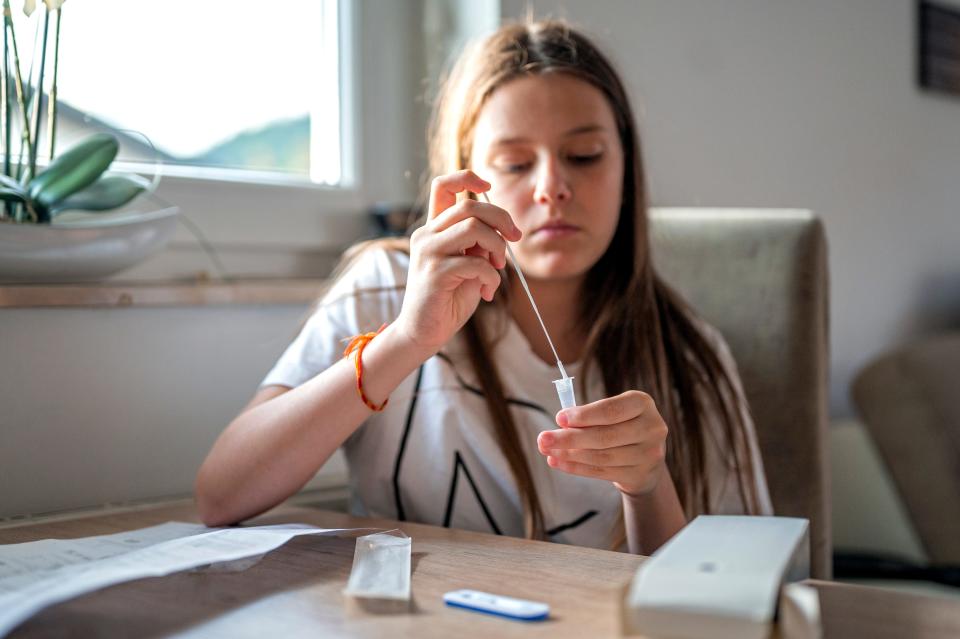
Even if your health coverage plan has set up a network of preferred providers where you can get a test with no out-of-pocket expense, you can still get tests from other retailers outside that network. Insurance companies are required to reimburse you at a rate of up to $12 per individual test (or the cost of the test, if less than $12). More information about this is available at www.cms.gov/how-to-get-your-at-home-OTC-COVID-19-test-for-free.
People without insurance can also get free at-home test from some community health centers.
How reliable are rapid test results?
Is a positive rapid test considered a 'true positive'?
Yes. In previous waves, people have been encouraged to confirm their positive rapid test with a PCR test. However, with the current variant being as widespread and infectious as it is, this is no longer the case.
"If you have a positive rapid antigen test, you should consider it a true positive and you do not need a confirmatory PCR test," Sharff said.
So is a negative rapid test considered a 'true negative'?
At-home rapid tests usually come in packs of two. Sharff said it's best to take the second test 48 to 72 hours after the first. She added that a negative at-home rapid antigen test represents just a "moment in time" when a person was not shedding enough virus to be detected.
"I would think of it as one more tool in your toolkit to ensure protection," Sharff said. "Other tools in your toolkit, of course, are vaccines, which is the best protection against COVID, (and) masking with a well-fitted high-grade mask if you have availability of an N95 or KN95. ... If you have a negative antigen test at the time you go visit Grandpa, (you're) less likely to be infected with with COVID, with omicron, but the tests aren't perfect, especially in asymptomatic individuals."
She added that if you have symptoms but a negative antigen test, you likely still have COVID-19. She recommended people with symptoms isolate regardless of their result and retest in a couple days.
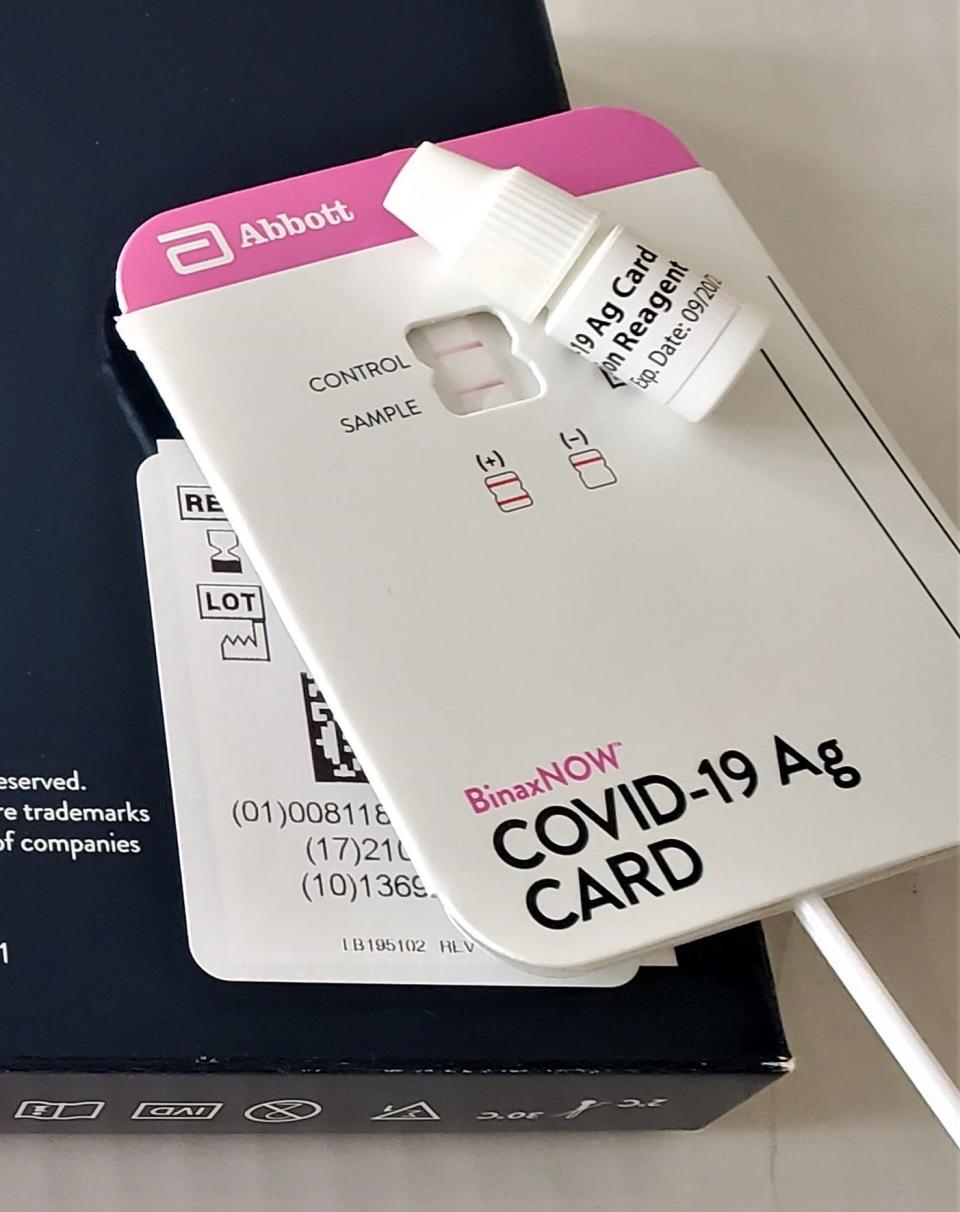
What should I do if I test positive for COVID-19?
Three main things people should do if they test positive:
Isolate from others
Report your case to Lane County Public Health through a form on its website
Call Lane County Public Health for next steps and resources. LCPH is no longer doing outbound calls for case investigation.
"We're trying to make sure that folks understand that they need to report their at-home tests," Lane County Public Health spokesperson Jason Davis said in an interview earlier this month. "Without doing that, Public Health has no idea about our true case count in the community and can't react accordingly."
Residents can call LCPH 541-682-1380 from 8:30 a.m. to 5 p.m. Monday through Friday and talk to someone about what to do next. A medical or public health professional will be one the line and can guide infectious people through what's next and connect them to resources.
The Centers for Disease Control and Prevention changed its recommendations around quarantining after a positive test result from 10 days to five days.
Davis warned that people with the virus should evaluate whether they still have symptoms before going back into the public, regardless if they have passed the five-day window.
LCPH does have resources to support those without the financial means or physicals space to isolate.
"People who don't have sick leave or don't get compensated for missing days, we can help with that. If you need a place to isolate, we can help with that. If you need food, if you need groceries, we can help," Davis said. "All that is available through participating in contact investigation."
Where can I get a PCR test?
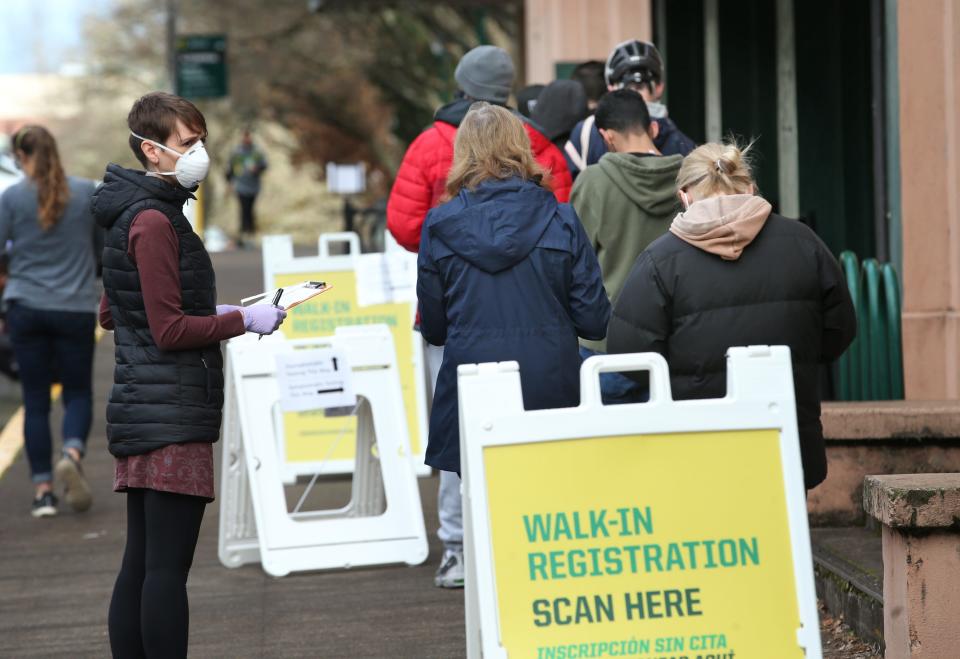
As the omicron variant hit Lane County, causing cases to skyrocket, the University of Oregon expanded its testing program to allow people with mild symptoms to check their status. The program continues to provide free walk-in or scheduled COVID-19 testing to those who are asymptomatic. Those feeling ill enough to need medical attention should go their health care provider, but people who feel like they have a cold, a tickle in their throat or a running nose could use this service to avoid further clogging strained health systems.
People with mild symptoms can find test kits at the ticket booths on the west side of McArthur Court, off University Street, between 10 a.m. and 12:30 p.m. and 1:30 p.m. and 4 p.m. Monday through Friday. The symptomatic tests are self-collected spit samples and given back to be processed. They are not take-home rapid tests.
Because the test kits use saliva people should not eat, drink, chew gum, apply lipstick or lip balm, brush teeth, floss or use nasal sprays 30 minutes prior to test.
In partnership with the university, Lane County Public Health is hosting various PCR testing clinics to give a residents an opportunity other than the clinic on campus. LCPH testing is free regardless of insurance status. LCPH asks people to register for its testing clinics online or by calling 541-682-1380.
Upcoming PCR COVID testing clinics:
Sunday, Jan. 30
St. Alice Catholic Church, Springfield, 1:30 p.m. to 4 p.m.
Cascade Middle School, Eugene, 3 p.m. to 6 p.m.
Wednesday, Feb. 2
Centro Latino Americano, Eugene, 9 a.m. to noon.
Junction City High School, Junction City, 4 p.m. to 6 p.m.
Feb. 13
St. Alice Catholic Church, Springfield, 1:30 p.m. to 4 p.m.
Cascade Middle School, Eugene, 3 p.m. to 6 p.m.
USA Today reporters Jim Sergent and Ariana Torrey contributed to this report. Contact reporter Tatiana Parafiniuk-Talesnick at Tatiana@registerguard.com or 541-521-7512, and follow her on Twitter @TatianaSophiaPT. Want more stories like this? Subscribe to get unlimited access and support local journalism.
This article originally appeared on Register-Guard: COVID-19 testing kits are coming. Here's what you need to know

